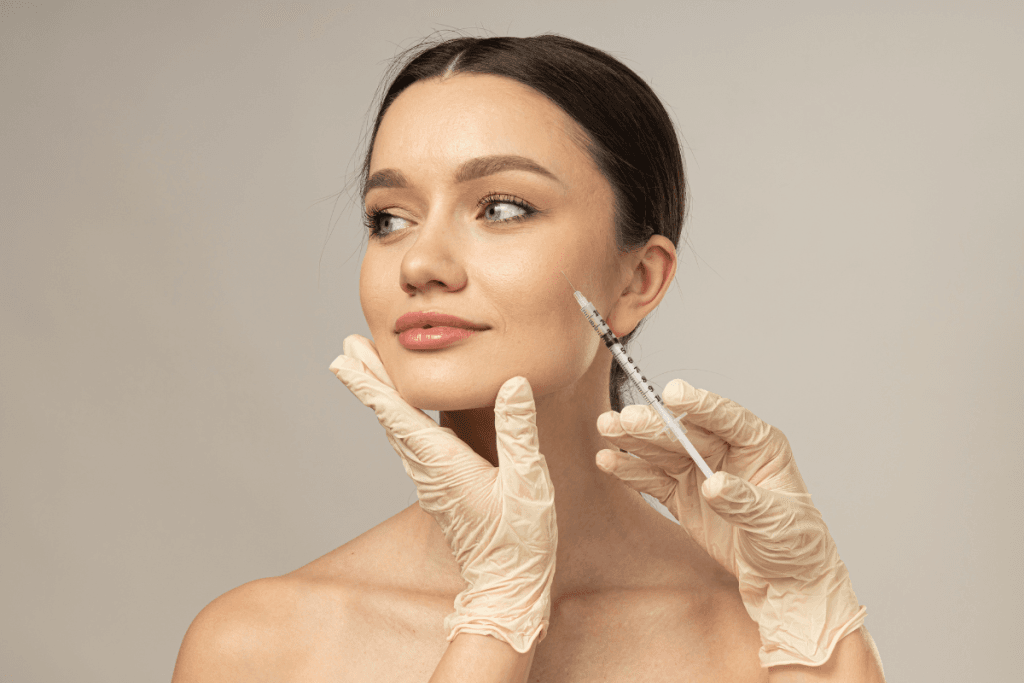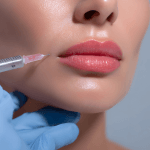Combination injectable planning is now a core skill for many aesthetic practices. Patients often present with mixed concerns, such as expression lines plus volume loss. In that setting, botox and dermal fillers are frequently discussed in the same consultation, even when you do not treat the same day.
This guide is written for clinic teams who want a practical, compliance-forward framework. It focuses on treatment planning logic, documentation, patient communication, and operational readiness. It does not provide dosing instructions or patient-specific medical advice.
Key Takeaways
- Match product class to problem type and facial dynamics.
- Set photo standards to reduce “before/after” misunderstandings.
- Discuss risks, recovery, and escalation pathways consistently.
- Plan inventory around indications, not trends or social posts.
- Keep procurement and traceability steps audit-ready.
Why Combination Aesthetics Changes Planning
Combining injectables is less about “more treatment” and more about matching tools to biology. Neuromodulators reduce targeted muscle activity. Fillers restore or shift volume, or refine contours. When you blend approaches, you also blend timelines, risk profiles, and follow-up expectations. That affects scheduling, consent language, and how your team explains outcomes.
Access is limited to verified licensed healthcare accounts.
From an operations view, combination planning also changes how you stock and document. Neuromodulators typically align with a predictable consumption pattern. Fillers vary by anatomic goal and by patient anatomy. A single cheek augmentation plan can look very different from a perioral (around-the-mouth) refinement plan. Your consultation template should reflect those differences in a structured way.
Mechanisms at a glance (and why patients notice differences)
Patients usually describe neuromodulators as “softening lines.” They often describe fillers as “lifting” or “adding structure.” That language can mislead if your team does not anchor expectations to objective factors. A practical approach is to map the primary visible issue to the most likely mechanism. Then explain that residual concerns may persist, even with excellent technique.
| Decision point | Neuromodulator (e.g., botulinum toxin) | Dermal filler (various materials) |
|---|---|---|
| Best fit for | Dynamic lines from muscle movement | Volume loss, contour changes, some static creases |
| Typical targets | Forehead expression lines, glabella, lateral canthus | Cheeks, jawline definition, lips, perioral folds |
| Early reactions | Localized soreness; bruising can occur | Swelling, bruising, tenderness are common |
| Key counseling focus | Onset is not immediate; symmetry takes time | Swelling can mask final contour for a period |
For additional brand and class context, see Popular Botulinum Brands.
Botox and Dermal Fillers in Combined Treatment Plans
Combination planning works best when you define a primary goal and a secondary refinement. The primary goal is usually either movement control or volume restoration. Secondary refinement might include balancing the lower face, supporting the oral commissures, or refining the jawline. This approach helps you avoid “chasing lines” with the wrong tool.
Clinically, the key distinction is whether the concern is driven by muscle pull, soft-tissue descent, or structural deficit. Operationally, the key distinction is whether the patient’s expected change is immediate, gradual, or variable as swelling resolves. Your intake form can support both by capturing prior injectable history, prior photos if available, and any complications from past treatments.
Sequencing and same-day considerations
Patients commonly ask, “can you get botox and fillers same day.” The answer depends on your protocol, clinician preference, and patient factors. Many practices schedule either same-day treatment or staged visits, but policies vary by risk tolerance and by the areas treated. If you stage, explain the rationale in simple language. If you combine, document the reasoning, the products used, and the counseling provided.
Why it matters: Clear sequencing reduces avoidable touch-ups and complaint risk.
Assessment and Area Selection: Where to Use Botox vs Filler
A consistent facial assessment framework keeps your planning defensible and repeatable. Start with the patient’s top concern in their words. Then reframe it anatomically. For example, “wrinkles” can mean dynamic forehead lines, etched static lines, or skin texture issues. That distinction drives whether you discuss dermal fillers or botox for forehead concerns, or whether you focus on neuromodulation first and reassess later.
In many practices, botox and dermal fillers appear together because patients rarely present with one isolated issue. A patient may have strong depressor activity around the mouth plus volume loss in the midface. Another may have chin dimpling with a desire for sharper jawline contour. You can reduce misalignment by using a standard “movement, volume, skin quality” triad during assessment. It also helps newer staff explain why different products target different problems.
Cheeks and jawline are common examples of volume-driven concerns. Social posts have popularized “1 ml cheek filler before and after” and “1 ml cheek filler results,” but the volume decision is not a one-size plan. Many fillers are supplied in 1 mL syringes, yet the required volume can vary widely by anatomy, starting point, and desired contour. Document the rationale as an anatomic plan, not as a promised quantity. This is especially important when patients reference cheek fillers before and after pictures or dermal fillers before and after jawline posts that may not match their baseline anatomy.
For product class browsing and staff education, you can reference the Botox Category and the Dermal Fillers Category as internal catalogs. When discussing hyaluronic acid options, the Hyaluronic Acid Fillers hub can support standardized nomenclature across your team.
Inventory consists of authentic, brand-name medical products.
Lower-face planning deserves extra structure because patient language is often vague. “Smile lines” may refer to nasolabial folds, but the visible issue can also be midface volume loss. “Marionette lines” may be true labiomandibular folds, but the driver can be oral commissure support, prejowl sulcus anatomy, or depressor pull. If the patient brings “before and after fillers around mouth” or “before and after fillers around mouth cheeks” images, validate the reference point but redirect to anatomy and safety. For a deeper overview of material types and use patterns, see Types Of Dermal Fillers.
Setting Expectations: Photos, Language, and “Before/After” Requests
Expectation management is a safety and satisfaction issue. It also protects your clinic operationally. Patient-requested “cheek fillers before and after pictures” can be useful, but they can also create unrealistic assumptions about volume, symmetry, and lighting. A practical clinic standard is to keep your own photo protocol consistent. Use the same camera, distance, background, and expression prompts. Note whether the patient is seated or standing, and keep that consistent across visits.
When patients ask for “before and after” comparisons around the mouth, remind them that swelling and bruising can temporarily exaggerate asymmetry. Document that you discussed variability in early appearance. Avoid promising a specific change from a single syringe, especially when patients ask how many ml filler for cheeks. Instead, explain that mL is a unit of volume, not a unit of outcome. Your notes should reflect that the plan is individualized and staged if needed.
Cost conversations also benefit from structure. Patients may ask about botox and dermal fillers cost in a single question. Keep the discussion within your clinic’s approved financial policy and avoid quoting outcomes. It can help to break the conversation into “units of service” (visit time, product type, follow-up needs) rather than framing it as a guaranteed aesthetic result. When staff need neutral background reading on comparisons across filler families, Restylane Vs Juvederm can support consistent terminology.
Quick tip: Keep a one-page photo checklist in every treatment room.
If you reference specific filler options internally, keep it educational and indication-agnostic. For example, your procurement team may standardize around certain SKUs for training consistency, such as Juvéderm Voluma With Lidocaine or Restylane Defyne. Keep any patient-facing discussion aligned with approved labeling and your supervising clinician’s protocol.
Aftercare, Recovery Time, and Risk Communication
Patients frequently search what to expect after botox and fillers and compare stories online. Your clinic can reduce confusion by giving short, written aftercare that matches your consent discussion. Separate expected short-term reactions from red-flag symptoms. Many patients also want a clear botox and fillers recovery time estimate, but you should keep that discussion general because bruising and swelling vary. Encourage patients to plan around important events conservatively.
Aftercare instructions differ for botox and dermal fillers, so combined visits need extra clarity. Explain that mild tenderness, localized swelling, and bruising can occur with either procedure. Emphasize that early appearance may not reflect the settled result. If you have a standardized botox and fillers swelling timeline handout, ensure it avoids promises and uses ranges and qualifiers. For staff training on neuromodulator counseling and baseline concepts, see Botox Gold Standard.
Risk communication should be specific without being alarming. For neuromodulators, patients often worry about eyelid droop, eyebrow asymmetry, or an “overdone” look. For fillers, the counseling must include both common effects (swelling and bruising) and rare but serious complications such as vascular compromise. Your protocol should define how patients contact the clinic after hours and how clinicians document follow-up calls. Avoid ad hoc messaging that varies by injector.
Patients may compare botox and fillers pros and cons in a single conversation. Consider using a “problem-first” explanation: muscle-driven lines may respond to neuromodulation, while volume deficits may respond to filler. If a patient asks about non-injectable alternatives, keep your answer neutral and scope-limited. A short comparison article like PDO Threads Vs Botox can help your team speak consistently without overselling any approach.
Clinic Operations: Documentation, Sourcing, and Workflow
Combination injectables require tight coordination between clinical and administrative steps. Many practices benefit from a short, repeatable workflow that starts before the patient arrives. It reduces missing consent signatures, incomplete photo sets, and gaps in adverse-event documentation. It also supports traceability across multiple product classes and lot numbers.
Sourcing relies on vetted distributors to support traceability.
Use a simple workflow snapshot for training and auditing. Policies vary by jurisdiction and facility, so align this with your medical director and local regulations. If your clinic serves multiple sites, standardize forms and naming conventions across locations to reduce transcription errors.
Clinic workflow snapshot
- Verify licensure: confirm authorized clinical account access.
- Document baseline: standardized photos and intake history.
- Order appropriately: align SKUs to planned indications.
- Receive inventory: confirm integrity and lot details.
- Store per label: follow manufacturer handling instructions.
- Administer and record: product, lot, site, and notes.
- Follow up: document calls, visits, and any concerns.
From a procurement angle, stock planning for botox and dermal fillers is easier when you separate “core” items from “edge-case” items. Core items support your most common indications and training pathway. Edge-case items may be reserved for select injectors or special anatomic goals. If you operate across US distribution channels, keep your vendor list and receiving checks consistent across sites. For deeper internal training on counseling and material selection, see Dermal Fillers In-Depth Guide.
Finally, keep your contraindications and precautions checklist current. Patients may not volunteer relevant history unless prompted. Your intake should capture prior filler complications, recent procedures, active skin infection, bleeding risk factors, and neuromuscular conditions. When in doubt, defer to product labeling and your supervising clinician’s protocol rather than improvising at chairside.
Authoritative Sources
When you update protocols or patient handouts, start with primary sources. Labels, regulator communications, and major specialty organizations provide the most defensible baseline. They also help your team avoid repeating myths from social media summaries.
Use these references to confirm indications, warnings, and patient counseling language. Keep a dated copy of any key updates in your policy binder or shared drive, so staff can cite the source during audits or incident reviews.
- FDA overview of botulinum toxin products
- FDA dermal fillers and soft tissue fillers
- American Academy of Dermatology on soft tissue fillers
For many practices, botox and dermal fillers can work best when your team treats them as a single planning conversation with two distinct risk profiles.
This content is for informational purposes only and is not a substitute for professional medical advice.






